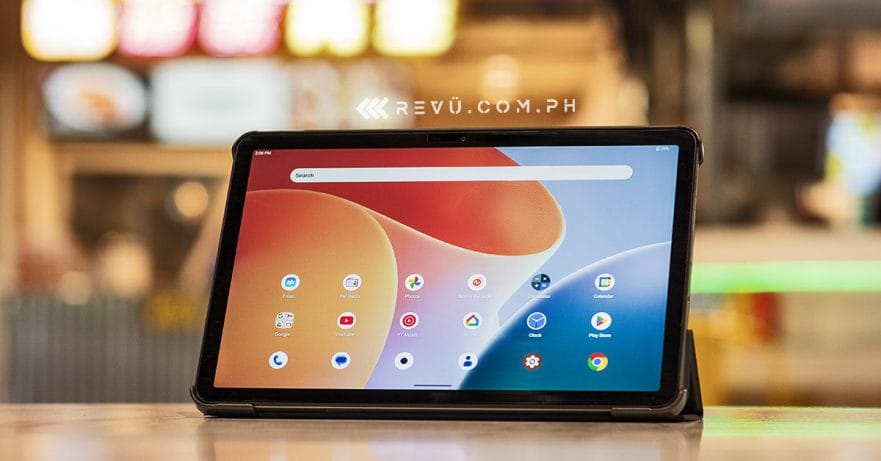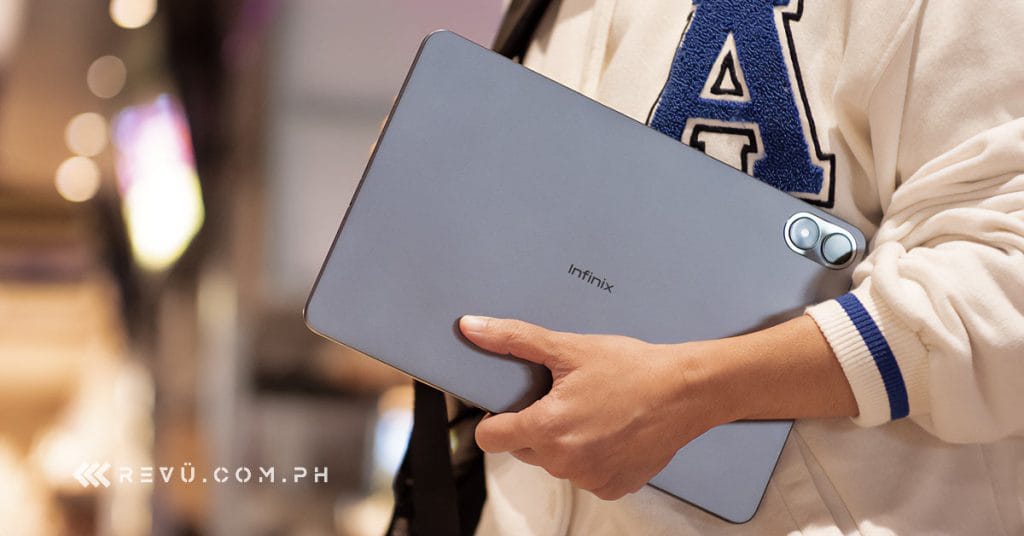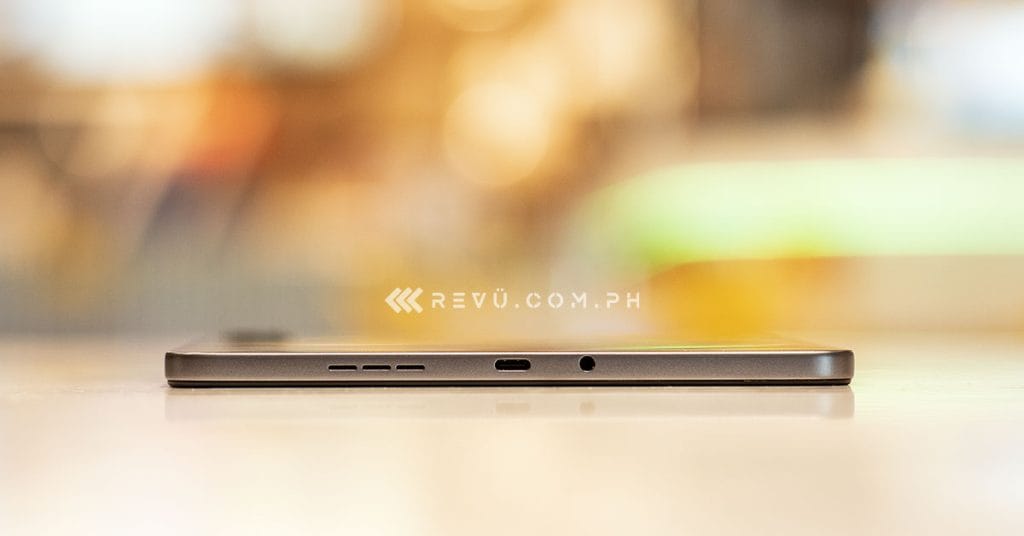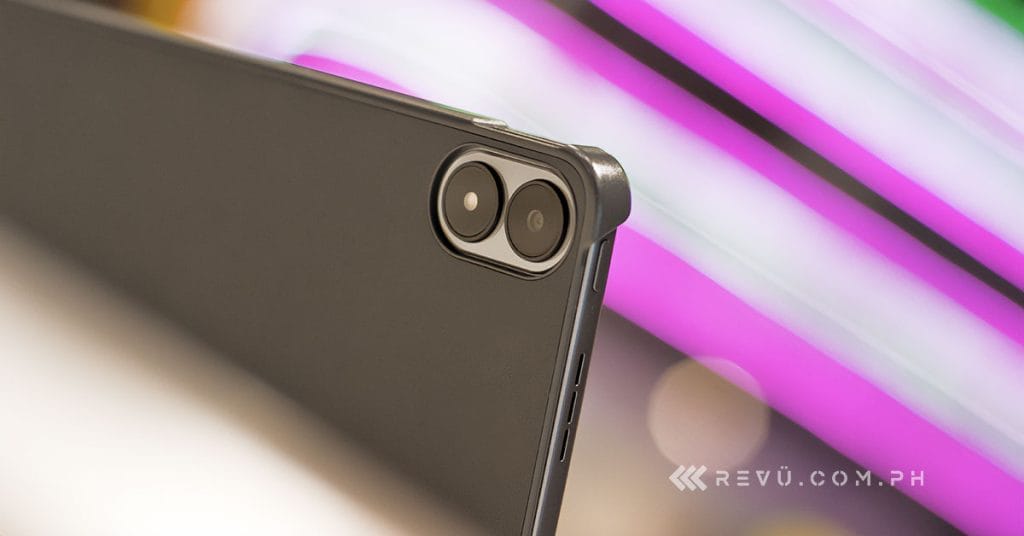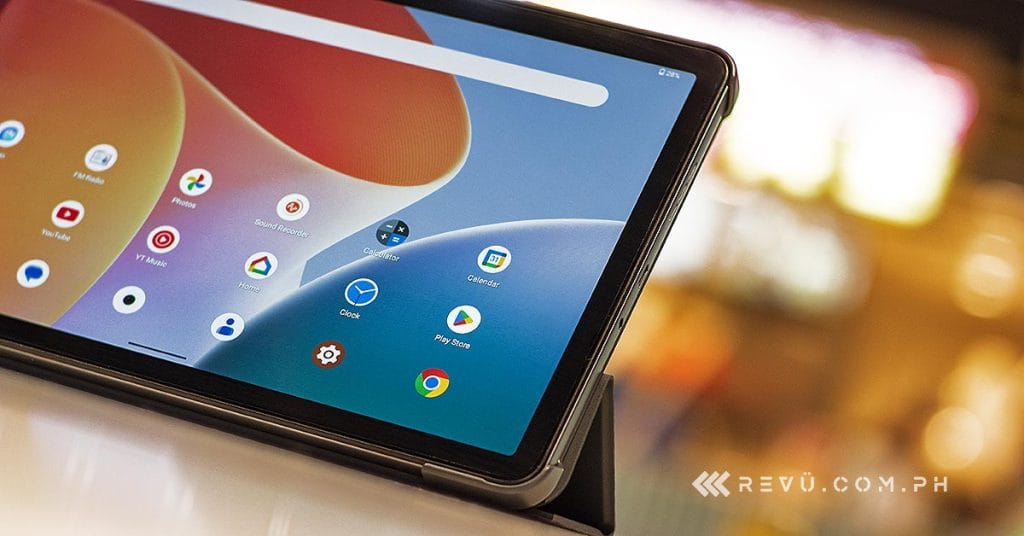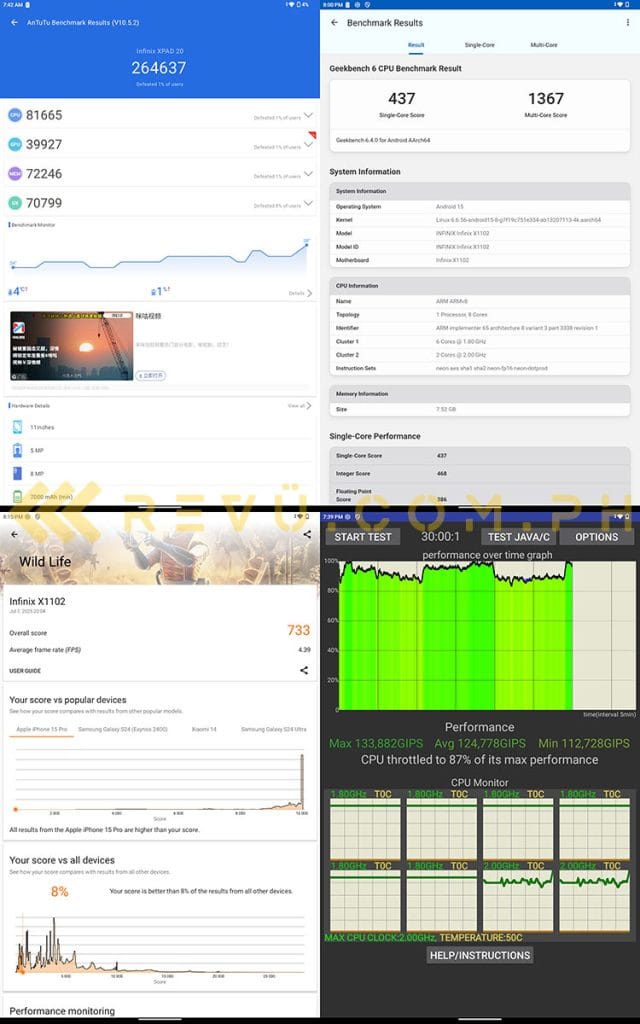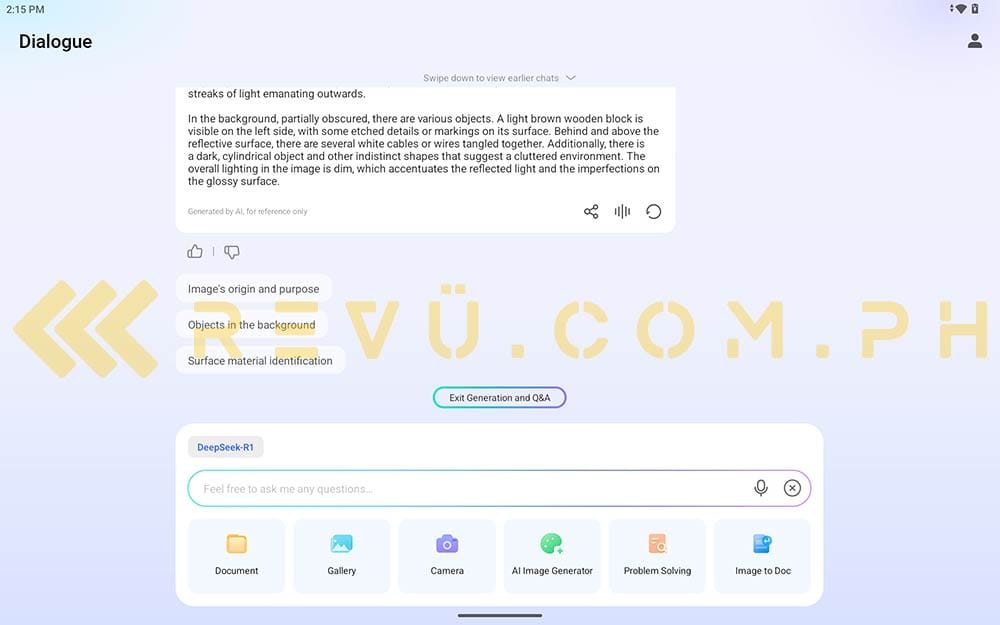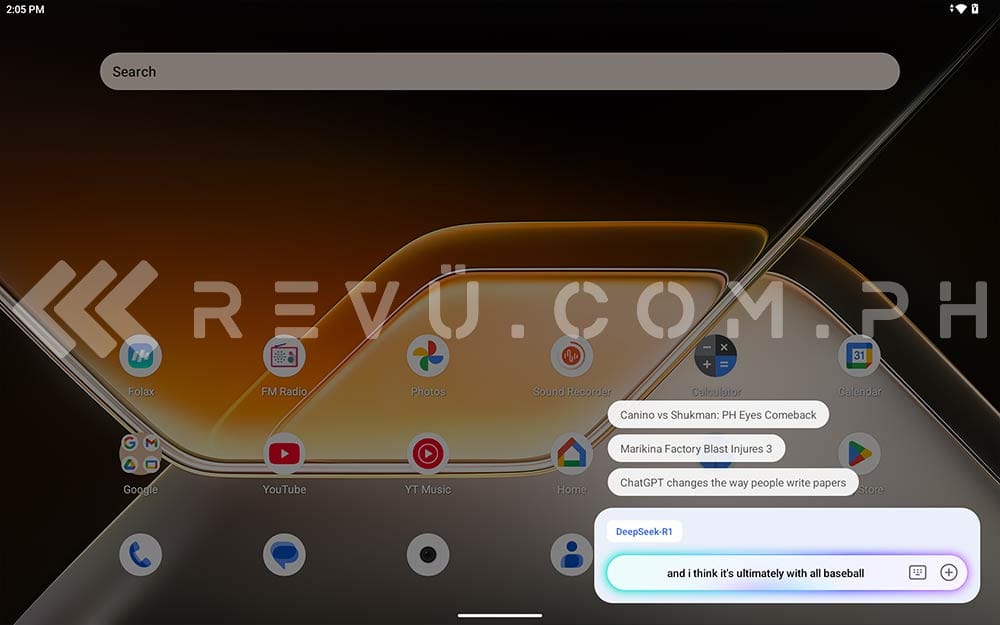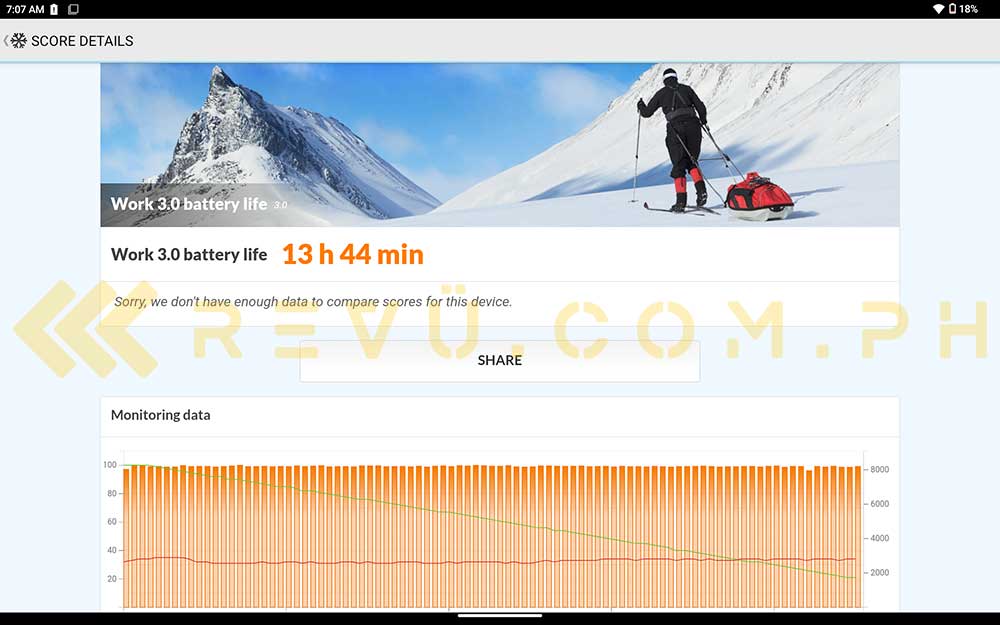Forget everything you think you know about “budget tablets.” Typically, that phrase brings to mind sluggish performance, flimsy builds, and screens that just aren’t worth your time.
But then, there’s the Infinix XPAD 20 4G LTE tablet. Priced aggressively at just P6,499 (roughly $115 converted) in the Philippines for the base model with 4GB of physical RAM and 128GB of built-in storage, with an 8GB/256GB kit at P7,499 ($133), this tablet aims to defy expectations. Locally, it will be available via Lazada, Shopee, and TikTok Shop, as well as official retailers nationwide.
We put it through its paces, and let’s just say the results surprised us.
Not your average budget tablet
The Infinix XPAD 20 makes a rather strong first impression, so don’t let the price tag fool you. This one’s got a surprisingly sleek, modern design, boasting a plastic build with those ever-popular flat edges and neatly rounded corners. Even the pill-shaped, single-lens camera module on the back barely protrudes, maintaining the XPAD 20’s clean, minimalist aesthetic. At just 7.9mm thin and weighing only 498 grams, it’s also notably slim and light for its class.
As for rigidity? You’d have to try to bend this unit to get any noticeable flex. Personalization is on the menu, too, with four distinct color options to match your vibe. While Infinix sent us the understated Stellar Grey model, you can also purchase the tablet in Forest Green, Dreamy Purple, or Rising Red.
And as a nice bonus, the standard retail package includes a free folio case. The cover handily folds into a stand, perfect for propping up the Infinix XPAD 20 in landscape mode. Whether you’re binging YouTube, catching up on your favorite shows, or jumping on a video call, it’s a practical addition. Plus, it adds a decent layer of protection, particularly around the reinforced corners, while cleverly leaving the side-mounted speakers exposed for optimal audio output.
Which brings us to those speakers. The Infinix XPAD 20 sports a pair of them, thoughtfully positioned on each side. For its segment, the sound quality is generally decent, though pushing the volume too high does introduce a noticeable amount of distortion, muddying the sound profile. On a positive note, the tablet actually includes a 3.5mm jack port, located right next to the USB-C charging port. That means you can plug in your favorite headphones, earphones, or external speakers directly, making it a versatile hub for all your mobile audio needs.
When it comes to taking pictures, the XPAD 20 comes equipped with an 8-megapixel rear camera. It won’t be replacing your phone’s camera — unless, of course, your device is from the early 2000s. However, it’s perfectly capable of capturing clear photos of documents in good lighting. Up front, there’s a 5-megapixel sensor for video calls. Just a heads-up: You’ll want ample light, ideally natural outdoor light, to get decent picture quality.
Pop out the side-mounted card tray, and you’ll find slots for a nano SIM card and a microSD expansion card up to 1TB. The Infinix XPAD 20 runs on a 4G-capable chipset, which is also backwards-compatible with 3G and 2G. We experienced solid signal reception in our testing area, but your mileage may vary depending on your location.
The big takeaway here is that the tablet doesn’t have to be tethered to your smartphone’s Wi-Fi hotspot; you can use the built-in SIM slot to get 4G cellular coverage virtually anywhere in the country. This makes true “learning on the go” a reality. And if you’re in a pinch, the device can even pull double-duty as a portable hotspot for your handset or laptop.
The Infinix XPAD 20 boasts a generous 11-inch FHD+ LCD display, framed by symmetrical bezels that contribute to a decent screen-to-body ratio. For a tablet in this price bracket, the 90Hz refresh rate is a genuinely welcome surprise, too, offering a noticeably smoother experience. Of course, you can easily dial it back to 60Hz to conserve battery when needed. Meanwhile, the screen’s 72% NTSC color gamut promises vibrant and true-to-life colors.
The panel’s sharpness is likewise a real asset, allowing you to comfortably read e-textbooks, digital workbooks, or PDF materials for extended periods without eye strain. The same goes for taking handwritten notes or annotating homework during online classes. And naturally, educational videos and learning apps benefit immensely from the clearer visuals.
To top it off, the screen can hit a peak brightness of 440 nits — brighter than many tablets in this segment. That’s certainly ample for comfortable indoor use, even in brightly lit rooms. This panel also features a TÜV Rheinland-certified Eye Comfort mode, which could be a game-changer for those late-night study sessions, effectively reducing blue light and minimizing eye fatigue.
AI-powered productivity
Under the hood, the Infinix XPAD 20 is powered by a MediaTek Helio G88 chipset. The 12nm processor firmly positions the tablet in the entry-level segment, focusing on efficient everyday performance and commendable battery longevity. For the heavy lifting, it leverages two Cortex-A75 cores clocked at up to 2.0GHz, accompanied by six Cortex-A55 cores at 1.8GHz for less demanding tasks. Graphical duties fall to a dual-core Mali-G52 GPU, which, as expected, remains the primary bottleneck in the most graphically intensive scenarios, particularly when diving into resource-heavy apps.
Obviously, this particular model is not a powerhouse designed to push the highest settings in modern games. However, despite its budget-friendly positioning, the XPAD 20 proved itself to be a pretty capable device, especially for daily usage scenarios. It breezes through everyday tasks like streaming videos, downloading files on the go, or scrolling through social media feeds without a sweat. More impressively, it can tackle some older, yet still demanding games, such as GTA: San Andreas, Titan Quest, and Star Wars: Knights of the Old Republic without major hiccups. Even more graphically intense open-world games like Genshin Impact and Free City ran smoothly, provided we kept the graphics settings at their lower presets.
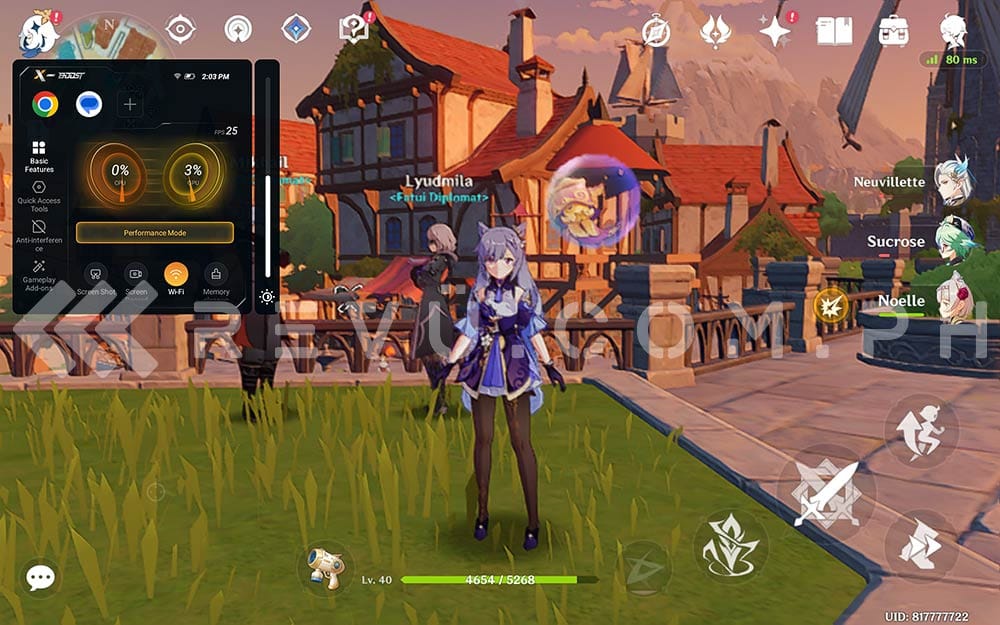
It’s worth highlighting that the Infinix XPAD 20 is available with a generous 256GB storage kit. Even better, you can expand that storage further via a microSD card. This makes it an excellent choice for students juggling a multitude of files and learning apps, while still leaving ample room for demanding 3D games like Genshin Impact, which easily takes up over 20GB of space on its own.
In a move to set the XPAD 20 apart in the crowded Philippine tablet market, Infinix has baked in a notable suite of AI features. We’re talking about system-integrated AI, powered by DeepSeek-R1, that includes the company’s own Folax voice assistant, AI Screen Recognition, and AI Translation.
So, what exactly is Folax? Well, Infinix is pitching it as your “invisible productivity assistant,” and honestly, it really aims to make your daily grind a whole lot smoother with natural, hands-free voice control or just a quick long-press of the power button. Imagine being able to quickly ask Folax for information during study sessions without ever leaving your current app. Or maybe you’re stuck on some tough homework — a simple voice command can get you the assistance you need.
Of course, Folax goes beyond just voice commands. You can also launch it to describe a picture in your gallery or camera app, or even ask it to generate an image from scratch. Need to digitize something? It can scan text from an image and drop it straight into a document. And for those tricky math problems, just use your camera to upload a photo of the equation — Folax will help you check if you solved it correctly.
Then there’s the incredibly handy Hi Translate app, a robust, AI-powered translation tool that supports a ton of languages, including Chinese, French, German, English, Filipino, and even Cebuano. It’s got versatile translation modes built for seamless communication, whether you’re connected to the internet or not.
Need to translate something on the fly? Just point your camera at the text — its image-translation feature handles the rest instantly. Or if you just need a specific part of a document translated, you can precisely select and translate portions while keeping the original layout intact. For real-time chats, there’s in-app translation that works within popular apps like Instagram and WhatsApp. And for those live conversations, the Live Translation mode offers two-way dialogue translation, perfect for everything from daily chats to business discussions.
A more connected ecosystem, coming soon
If you happen to own other Infinix devices, you’ll really appreciate the addition of Instant Transfer. This nifty feature lets you conveniently share files between your supported Infinix units without messing with cables, third-party apps, or even your mobile data. You can quickly send photos, videos, homework, and all sorts of files between your phone and your Infinix XPAD 20.
But the brand isn’t stopping there. This August, a new software update is set to drop, significantly expanding the XPAD 20’s productivity features. The update will bring Cross-Device Screen Mirroring and Cross-Device Clipboard & App Switching. This means you’ll get true split-screen apps and floating windows on the tablet, opening up more multitasking possibilities.

Imagine mirroring your chat apps or learning tools from your smartphone directly to the Infinix XPAD 20, letting you stay connected without breaking your study flow. You can easily show classmates content from your handset during group projects, or simply enjoy games, videos, and creative apps on that larger tablet screen for better control and viewing.
The update will also let you browse documents on one side of the screen while taking notes on the other, or watch educational videos via floating windows. For a truly seamless workflow, you’ll be able to drag and drop files between apps, copy homework questions, research links, or study notes from your phone and paste them directly into documents on your XPAD 20. You can even start writing essays or messages on your handset and seamlessly continue on the tablet for better typing and easier editing, or just quickly copy fun memes and pictures between devices when chatting with friends. It’s all about making your digital life less clunky and more connected.
Unexpectedly good battery mileage
The Infinix XPAD 20 packs a 7,000mAh cell. While that might not sound like a huge number given its generous display and size, we found that it consistently delivers impressive mileage on a single charge. This surprising endurance largely boils down to the tablet’s modest internals, which are efficient without being power-hungry. Infinix’s choice of chipset, combined with the tablet’s dimensions, also does an excellent job of managing thermals. In our testing, the XPAD 20 never throttled below 87% of its maximum performance even after a grueling 30-minute stress test in the CPU Throttling Test app — a genuinely commendable feat for any modern device, let alone one in this segment.
Our PCMark battery-endurance benchmark clocked a solid 13 hours and 44 minutes. Just take note that this test primarily simulates smartphone-like usage, which isn’t always how a tablet gets used in the real world. To give you a more practical sense of the XPAD 20’s longevity, we put it through several real-world scenarios. Two hours of Netflix streaming in standard definition drained 20% of the battery with the brightness set to 80%, while 1 hour and 30 minutes of 1080p YouTube streaming showed an 8% drain at similar brightness levels. Finally, 30 minutes of spreadsheet work in WPS Office with the screen at half brightness resulted in a mere 4% battery drop. Ultimately, if all-day battery life is a must, this tablet makes a strong case for itself.
When it’s time to top up, the Infinix XPAD 20 relies on 10-watt wired charging right out of the box. Frankly, in mid-2025, it’s not the fastest charging speed around, and we certainly hoped for more. Still, it’s important to remember that this is an entry-level tablet, and the charging speed reflects that positioning. In our tests, getting this XPAD from a dead battery to a full charge took roughly 230 minutes or almost 4 hours.
Final thoughts
So after putting the Infinix XPAD 20 through its paces, where do we land? Despite its undeniably budget-friendly price tag, this tablet defies expectations and lives up to its “not your average budget tablet” moniker. It delivers a sleek design, an expansive 90Hz display that’s easy on the eyes, and the invaluable addition of 4G cellular connectivity, making it a true go-anywhere device.
Add in a suite of genuinely useful AI features like Folax and the Hi Translate app, plus battery life that consistently punches above its weight, and you’ve got a compelling package. Sure, it’s not a gaming powerhouse for graphically demanding titles, and charging isn’t lightning fast, but for its asking price, the XPAD 20 offers a well-rounded and capable experience.
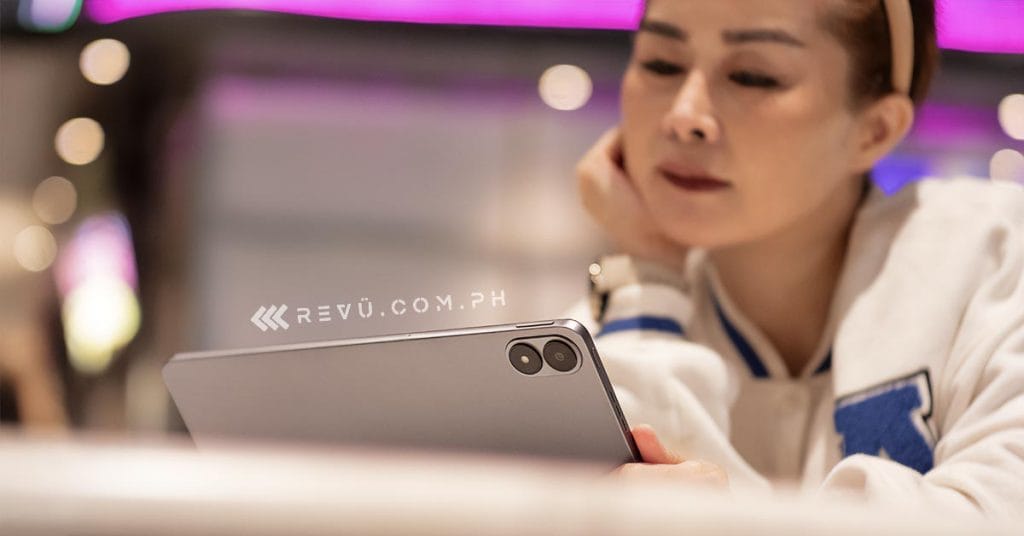
For students, commuters, or anyone looking for an affordable, versatile Android tablet that truly goes the distance and keeps you connected and productive, the Infinix XPAD 20 is undoubtedly one to consider. Additionally, if you can stretch your budget a bit, we highly recommend picking up the P7,499 ($133) 8GB/256GB top-shelf model, which is the unit we tested. That extra RAM will go a long way in future-proofing your unit, ensuring a smoother experience with those upcoming multitasking features we talked about earlier — all for not a whole lot more money.
Infinix XPAD 20 specs
- 11-inch LCD display, FHD+ resolution, 90Hz refresh rate
- 12nm MediaTek Helio G88 4G processor
- Mali-G52 MC2 GPU
- 4GB/8GB LPDDR4X RAM
- 128GB/256GB expandable storage
- 8-megapixel rear camera
- 5-megapixel front camera
- 7,000mAh battery with 10-watt fast wired charging
- Android 15
- Colors: Rising Red, Stellar Grey, Dreamy Purple, and Forest Green
Share this Post

